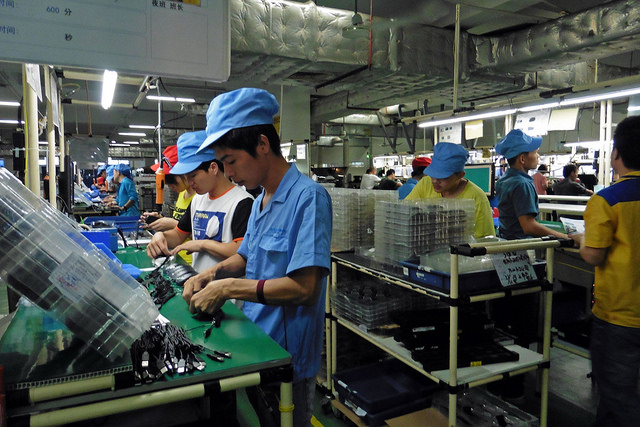
China isn’t just making the world’s stuff. It’s making all the stuff it needs to make that stuff.
While America debated serious topics like the proper pronunciation of “GIF” (it’s with a hard G) and whether Die Hard is a Christmas movie (it is), China disrupted global trade (again).
It’s no secret that China became a manufacturing powerhouse after entering the World Trade Organization in 2001. China makes all sorts of things — from electronics to furniture to pots and pans to commodities like steel and aluminum — and exports these products around the world.
Millions of American manufacturing workers lost their job as a result, and factory communities around the country are still suffering. Researchers even have a name for it — “the China Shock.”
None of this is news, of course. But what you might not realize is there could be more China shockwaves ahead.
The Wall Street Journal reports that China is now making more of the raw materials and other supplies it needs to manufacture the goods it exports around the world. That is altering the global flow of trade and impacting business for many global manufacturers, who previously sold their products in China.
Although China makes the world’s cell phones and cookware, for years it didn’t make many of the materials needed to put those things together — it had to import them.
Exports to China, which had risen nearly every year since 1990, fell 14% last year, the largest annual drop since the 1960s. They are down another 8.2% this year, through September. The decline helped shave 0.3 percentage point off world trade growth last year… China's trade surplus with the U.S. hit a record last year, largely because China is buying less.
Take GMM Non-Stick Coatings, a Chinese firm that makes cookie sheets, grills and frying pans, which are sold in places like Walmart. Until recently, the company had to import the resins, pigments and pastes it needed to manufacture its cookware, including from companies like U.S.-based Dow Chemical. Now the company buys 70 percent of its supplies locally.
None of this happened by accident; the Chinese government is behind the effort to boost its domestic supply chain. Not only has it issued tariffs on products it sees as a threat to local industry (like the kinds of things Dow Chemical sells to GMM) it also announced a plan last year to “raise the domestic content of core components and key materials to 40% by 2020 and 70% by 2025.”
China’s government also has been spending hundreds of billions of dollars on research and development each year to gain on edge in the production of higher-end goods and materials that the country isn’t already making.
So what does this mean here at home?
It is time for America to get serious about supporting our own manufacturing sector, through trade enforcement, research and development spending, workforce training and infrastructure investment? Pursuing any of these goals will make it easier for companies to manufacture in the United States. If we don't take action to boost U.S. manufacturing, we can expect another big China shockwave in the years ahead.

